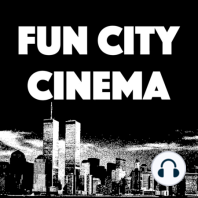4 min listen
Jason & Mike in A Very Good Year
FromFun City Cinema
ratings:
Length:
70 minutes
Released:
Jan 23, 2023
Format:
Podcast episode
Description
Hello “Fun City Cinema” subscribers - long time no see! The show is still on hiatus, as your hosts Jason Bailey and Mike Hull have been working very hard on “A Very Good Year,” a new podcast with a simple premise: each week we invite a guest (filmmakers and actors, critics and historians, comedians and musicians) who loves movies, and ask them to select their favorite year of movies. We then spend (about) an hour talking about that year: we ask them to share their top five films of the year; we look at the year’s news headlines, award winners, and box office champions; and we finish with a lightning round.If you haven't subscribed to that show yet - well, you should! But if you need a bit more enticing, we wanted to share our first episode, in which we're joined by actor ("Bill & Ted," "The Lost Boys," and, most relevant to you Fun City folks, "Death Wish 3"), filmmaker ("Zappa," "The YouTube Effect"), and all-around good guy Alex Winter to discuss his very good year: 1931. Enjoy!
Released:
Jan 23, 2023
Format:
Podcast episode
Titles in the series (17)
Sneak Peek: Fight the Power by Fun City Cinema
